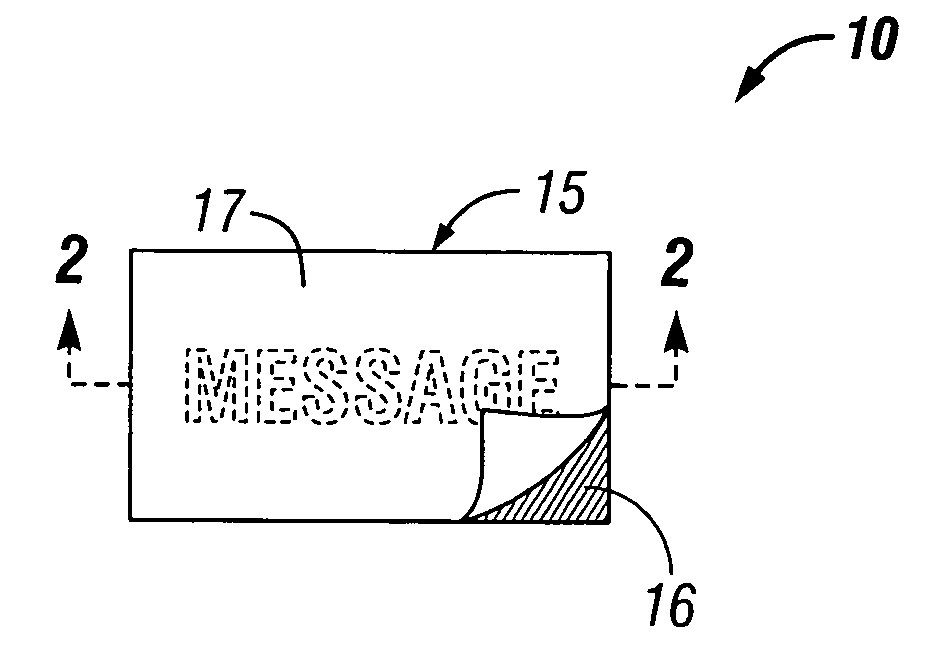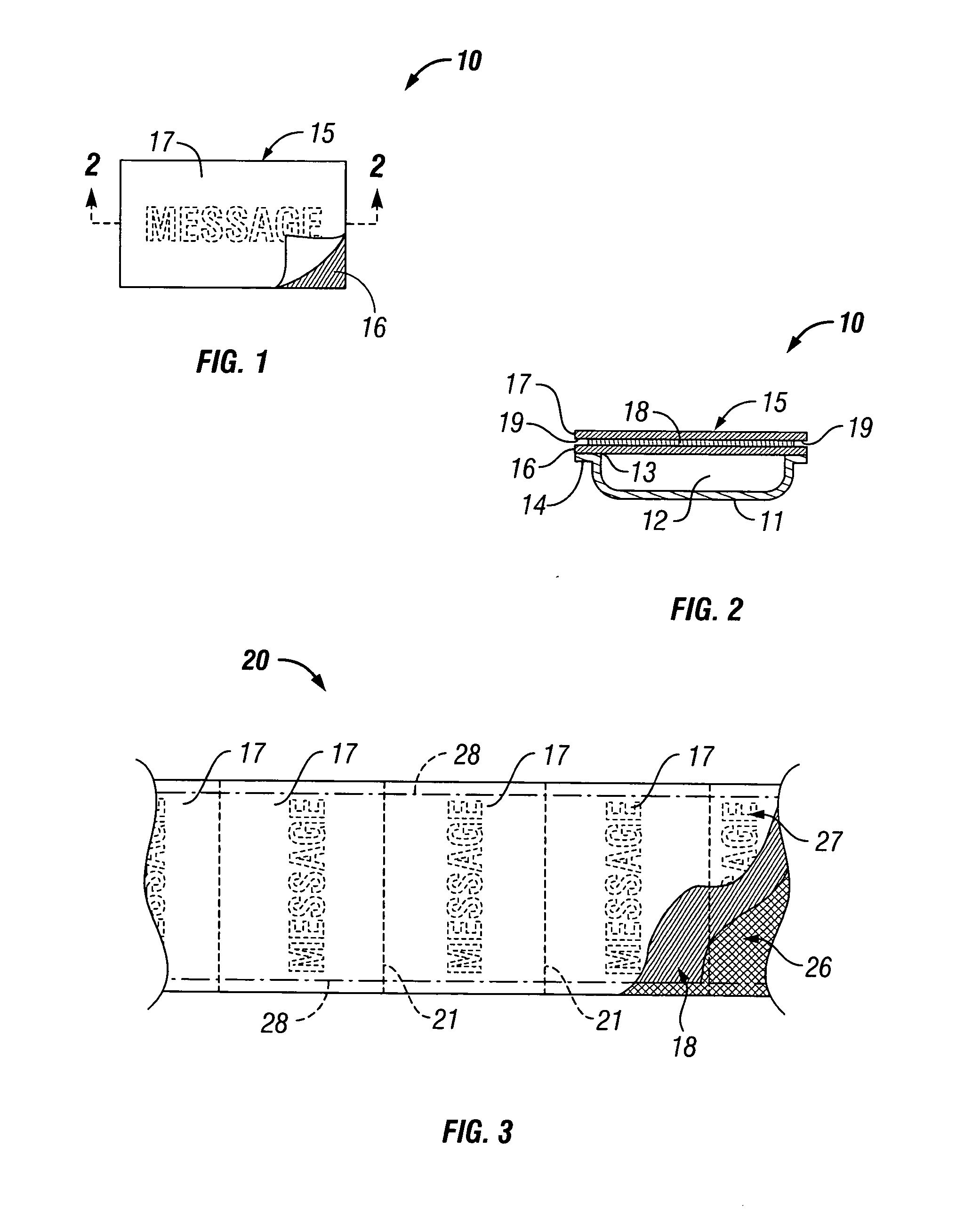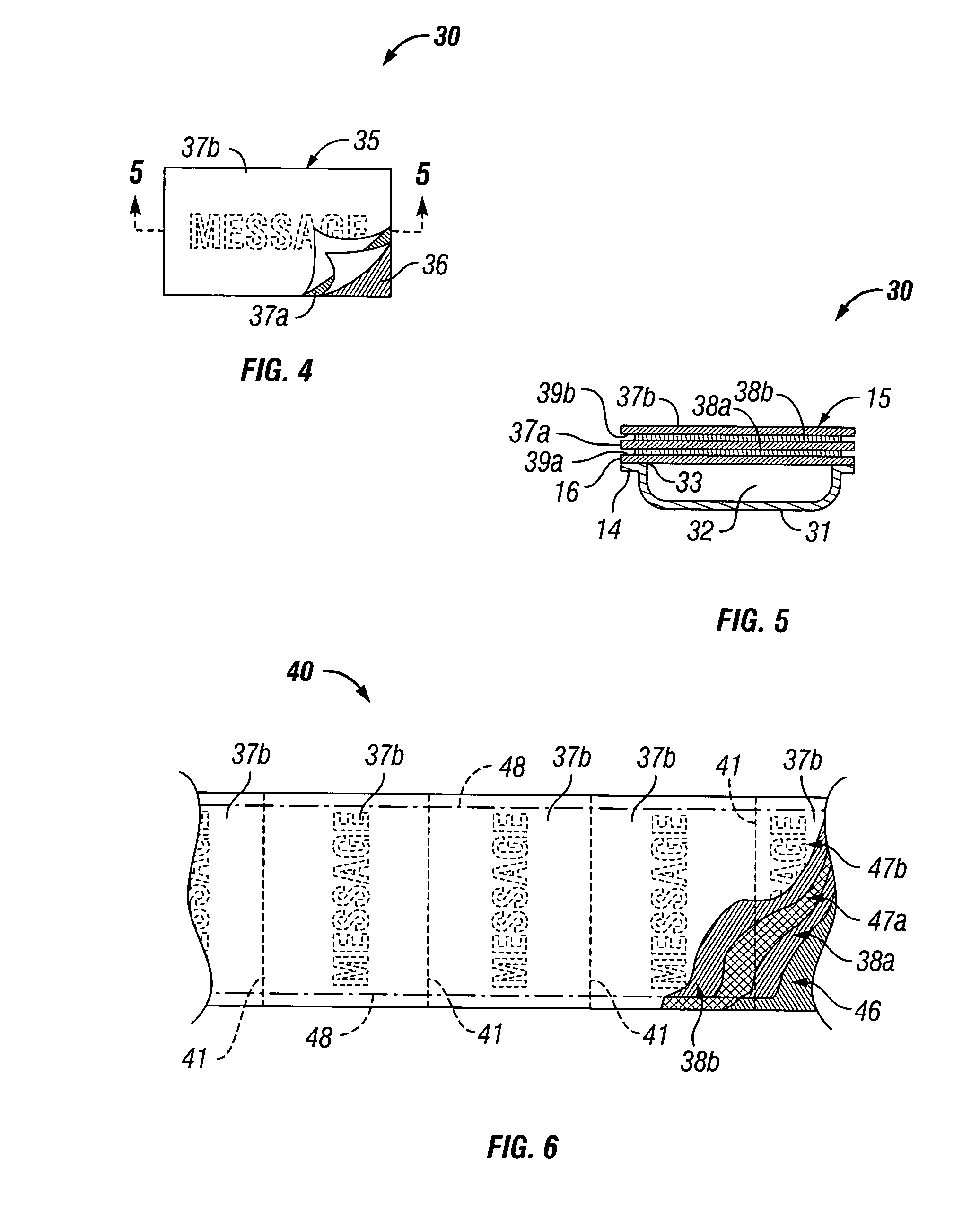Cup containers having advertising media
a technology of advertising media and cups, applied in the field of products, can solve the problems of high content production costs of printed mass media, high cost of entertainment, news and other content produced by broadcast media, and high cost of producing entertainment, news and other content, etc., and achieves the effects of reducing production costs, and increasing the overall size of packaged products
- Summary
- Abstract
- Description
- Claims
- Application Information
AI Technical Summary
Benefits of technology
Problems solved by technology
Method used
Image
Examples
embodiment 10
[0052]An example of this first preferred embodiment 10 is shown in FIGS. 1-3. As best seen in FIG. 2, container 10 comprises a cup 11 which defines a volume 12 and has an open end 13 through which product (not shown) may be inserted. A flange 14 extends from the open end 13. Flange 14 provides a surface to which lidding 15 is sealed.
[0053]More specifically, lidding 15 is a composite structure comprising a lid sheet 16 and a message sheet 17. Lid sheet 16 is composed of an imprintable substrate and is sealed to flange 14 of cup 11 to seal volume 12. Message sheet 17 is removably laminated to the outer face (outer relative to sealed volume 12) of lid sheet 16 by a layer of adhesive 18. Message sheet 17 also is composed of an imprintable substrate and provides a substrate on which a message may be imprinted. The message sheet 17 is removable from the lid sheet 16 so that the message may be viewed by a consumer.
[0054]It will be noted that the adhesive layer 18 does not extend across the...
embodiment 50
[0064]An example of this third preferred embodiment 50 is shown in FIGS. 7-10. As best seen in FIG. 8, container 50 comprises a cup 51 which defines a volume 52 and has an open end 53 through which product (not shown) may be inserted. A flange 54 extends from the open end 53. Flange 54 provides a surface to which lidding 55 is sealed.
[0065]More specifically, lidding 55 is a composite structure comprising a lid sheet 56 and a folded message sheet 57. Lid sheet 56 is composed of an imprintable substrate and is sealed to flange 54 of cup 51 to seal volume 52. Message sheet 57 is removably laminated to the lid sheet 56. That is, message sheet 57 is folded such that a first portion 57a is removably laminated to the outer face of lid sheet 56 by a layer of adhesive 58a and a second portion 57b overlays the first portion 57a of the message sheet 57. Preferably, the second portion 57b is removably laminated to the first portion 57a by a layer of adhesive 58b. Message sheet 57 also is compos...
embodiment 70
[0070]An example of this fourth preferred embodiment 70 is shown in FIGS. 11-13. As best seen in FIG. 12, container 70 comprises a cup 71 which defines a volume 72 and has an open end 73 through which product (not shown) may be inserted. A flange 74 extends from the open end 73. Flange 74 provides a surface to which lidding 75 is sealed.
[0071]More specifically, lidding 75 is a folded structure composed of an imprintable substrate sheet which has a lid section 76 and a message section 77. Lid section 76 is sealed to flange 74 of cup 71 to seal volume 72. Substrate sheet 75 is folded along the boundary between the lid section 76 and message section 77 such that message section 77 overlays lid section 76. Preferably, message section 77 is removably laminated to the outer face of lid section 76 by a layer of adhesive 78. Message section 77 provides a substrate on which a message may be imprinted and is removable from the lid section 76 by cutting or tearing the substrate sheet 75 along ...
PUM
 Login to View More
Login to View More Abstract
Description
Claims
Application Information
 Login to View More
Login to View More - R&D
- Intellectual Property
- Life Sciences
- Materials
- Tech Scout
- Unparalleled Data Quality
- Higher Quality Content
- 60% Fewer Hallucinations
Browse by: Latest US Patents, China's latest patents, Technical Efficacy Thesaurus, Application Domain, Technology Topic, Popular Technical Reports.
© 2025 PatSnap. All rights reserved.Legal|Privacy policy|Modern Slavery Act Transparency Statement|Sitemap|About US| Contact US: help@patsnap.com



